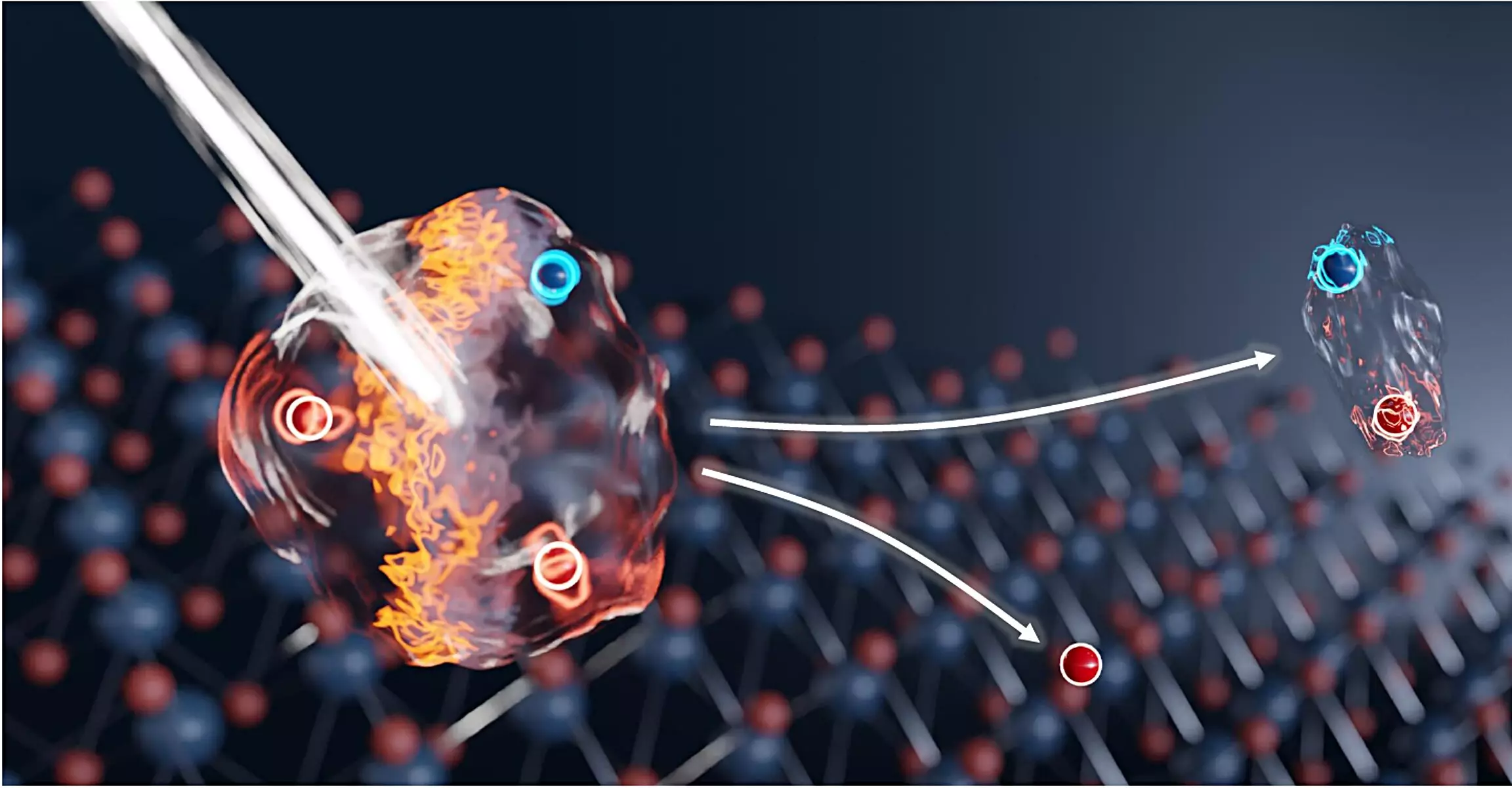The field of quantum technology is continually evolving, unveiling new materials and methods that defy conventional understanding. An innovative development led by researchers from TU Dresden sheds light on the potential of extremely thin materials, composed of only a few atomic layers, which promise groundbreaking applications in electronics and quantum technologies. The recent experiment carried out at the Helmholtz-Zentrum Dresden-Rossendorf (HZDR) reveals outstanding progress in the manipulation of luminescent particles within these ultra-thin two-dimensional materials. Notably, this research could revolutionize the approach to optical data processing and flexible detection technologies. The findings, published in the prestigious journal Nature Photonics, set the stage for a new era in semiconductor research.
Two-dimensional semiconductors exhibit significant differences from their bulk counterparts. A crucial characteristic is the formation of excitons, bound electron-hole pairs that arise when energy excites an electron in the semiconductor, leaving behind a positively charged hole. This attractive interaction allows for the creation of a trion when another electron is attracted to the exciton, forming a unique three-particle state. The trion’s distinct qualitative feature is its electrical charge combined with a robust light emission capability, enabling simultaneous electronic and optical control. Understanding these interactions provides a foundation for exploring the dynamics between excitons and trions, which is at the heart of the recent advances in switching speeds.
Traditionally, laboratories have successfully achieved switching between exciton and trion states, yet the switching speeds were limited. The collaborative team, guided by Prof. Alexey Chernikov from TU Dresden and HZDR physicist Dr. Stephan Winnerl, has made significant strides by accelerating this switching process. This achievement, part of the Würzburg-Dresden Cluster of Excellence “Complexity and Topology in Quantum Materials” (ct.qmat), signals a promising move towards faster, more efficient applications.
Utilizing the capabilities of the FELBE free-electron laser at the HZDR, the researchers employed intense terahertz pulses—a frequency spectrum between radio waves and near-infrared radiation—to trigger the transitions. Conducting their experiments on an atomically-thin layer of molybdenum diselenide at cryogenic temperatures, the team first generated excitons using ultra-short laser pulses. These excitons rapidly captured available electrons to form trions. By directing terahertz pulses at the material, the researchers efficiently drove the transformation of trions back into excitons. This remarkable switching process occurs within mere picoseconds, indicating a speed increase nearly a thousand times faster than previous electronic methods.
The implications of this research are profound. The rapid switching demonstrated suggests potential extensions to complex electronic states and a variety of material platforms. Researchers anticipate that adapting these findings could facilitate the exploration of exotic quantum states of matter that arise from interactions among numerous particles, paving the way for room-temperature applications. Moreover, these advancements hold promise for future use in sensor technologies and optical data processing.
Dr. Winnerl articulates the potential for developing innovative modulators capable of rapid switching. When combined with ultra-thin crystals, these modulators could lead to the creation of compact components that electronically control optically encoded information. The feasibility of such technological advancements could usher in a new wave of devices optimized for modern electronic demands.
Another fascinating area of potential lies in terahertz radiation detection and imaging. The switching dynamics observed in these two-dimensional semiconductors may lay the groundwork for detectors capable of operating across a broad frequency spectrum. Chernikov notes that these developments could lead to terahertz cameras equipped with multiple pixels, operating with relatively low intensity to trigger the switching process. Such capabilities could revolutionize imaging technologies in various fields.
The research conducted by the TU Dresden team signifies an essential milestone in understanding the dynamics of excitons and trions within two-dimensional materials. By achieving unprecedented control over these excitonic states, the potential for cutting-edge applications in quantum technology continues to expand. As researchers build upon these findings, the future promises an exciting landscape where quantum materials may play an integral role in reshaping electronic and optical industries. The implications of these advancements underscore the transformative potential that still lies ahead in the realm of quantum materials and their myriad applications.


Leave a Reply